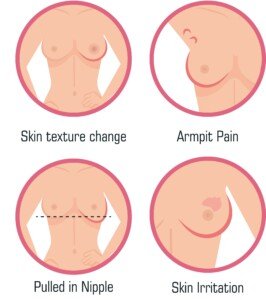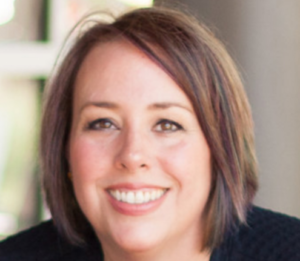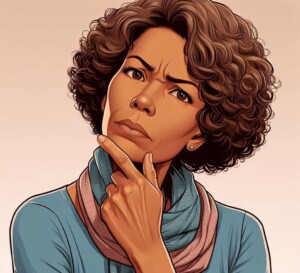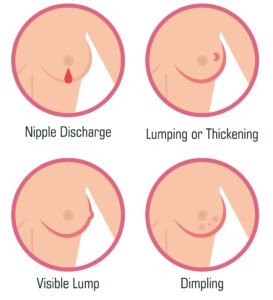If all you did was feel for lumps during your monthly self-breast exam and found nothing, you’re not in the clear.
There’re other things to look for.
Though the use of a mirror is heavily emphasized for monthly self-skin exams – it needs to be impressed up just as much for monthly self-breast exams.
Because you shouldn’t ONLY be feeling for lumps.
“Women are conditioned to feel for lumps to detect breast cancer,” says Heather Bartos, MD, a board certified OBGYN, and chief of Obstetrics & Gynecology at Texas Health Presbyterian Hospital in Denton, TX.
“But some types of cancers — inflammatory breast cancer, for example — may cause only a rash on the breast, slight swelling or generalized tenderness that’s easily mistaken for other benign conditions.”
If you have generalized tenderness in both breasts, this is less concerning and may be explained by exercise, a tight bra or PMS.
But if it’s in one breast and you weren’t recently hit there or otherwise have no explanation, then see your gynecologist.
“A good rule of thumb for examining your breasts is to feel for lumps — then look for abnormalities or any changes to the skin like rashes, discolorations, puckering or anything that is out of the ordinary for you,” says Dr. Bartos.
Two Ways You Should Use a Mirror During Your Self-Breast Exams
First, face a mirror head-on. Make sure the lighting above is bright so that you can clearly see suspicious signs.
Assume the four positions depicted below, and for each position, visually inspect your breasts.
The second way is to hold a hand mirror to your breasts, looking down at it. Place it below your breasts so that you can get a unique – but very good – view of the underside of your breasts.
Additional concerning symptoms would be oozing from a nipple that’s not related to lactation or a nipple that’s oddly inverted — when it never has been before.
An increase in the size or volume of veins under the skin of one breast is also a suspicious sign.
What Breast Cancer Can Look Like
FOUR BREAST CANCER SYMPTOMS. Freepik.com, studiogstock

FOUR MORE BREAST CANCER SYMPTOMS. Freepik.com, studiogstock
Also, don’t forget to check your armpits for lumps or swelling.
 Dr. Bartos served as an assistant clinical professor of OBGYN at the Uniformed Services University of Health Sciences for several years and was a physician in the U.S. Navy for eight years.
Dr. Bartos served as an assistant clinical professor of OBGYN at the Uniformed Services University of Health Sciences for several years and was a physician in the U.S. Navy for eight years.
 Lorra Garrick is a former personal trainer certified by the American Council on Exercise. At Bally Total Fitness she trained clients of all ages for fat loss, muscle building, fitness and improved health.
Lorra Garrick is a former personal trainer certified by the American Council on Exercise. At Bally Total Fitness she trained clients of all ages for fat loss, muscle building, fitness and improved health.
.




























